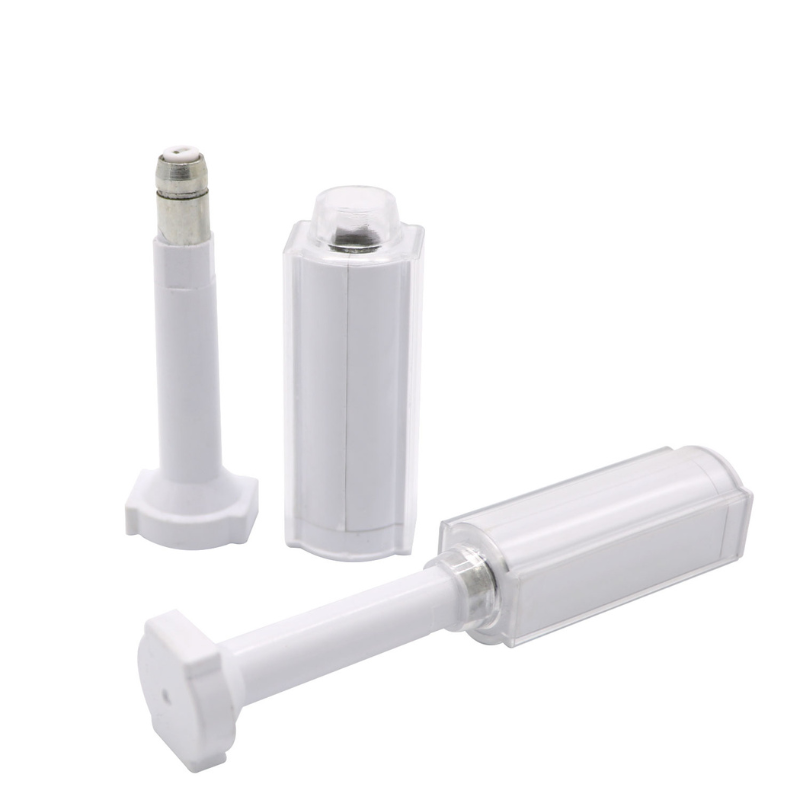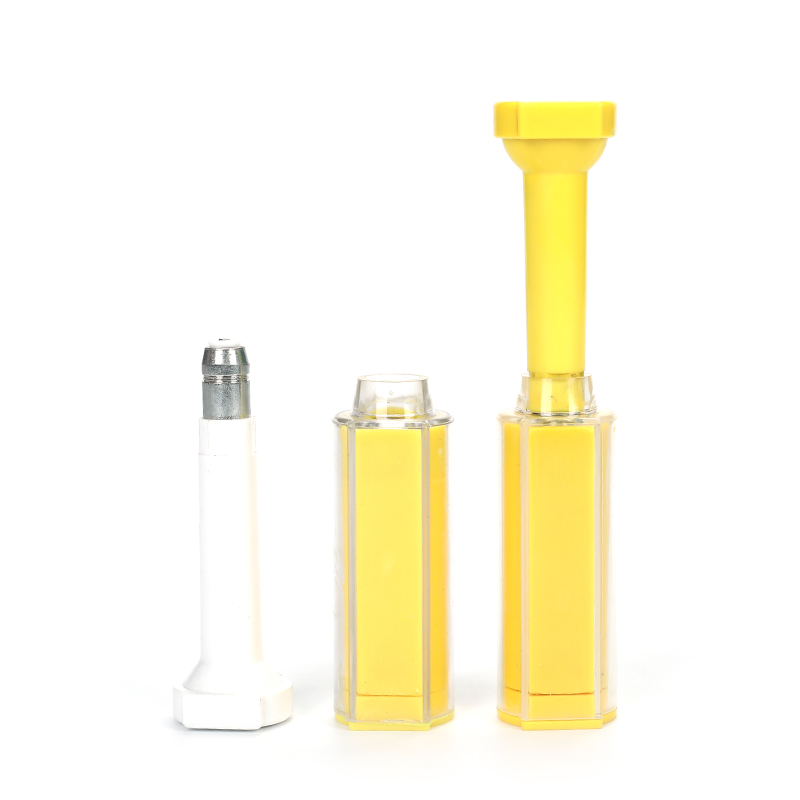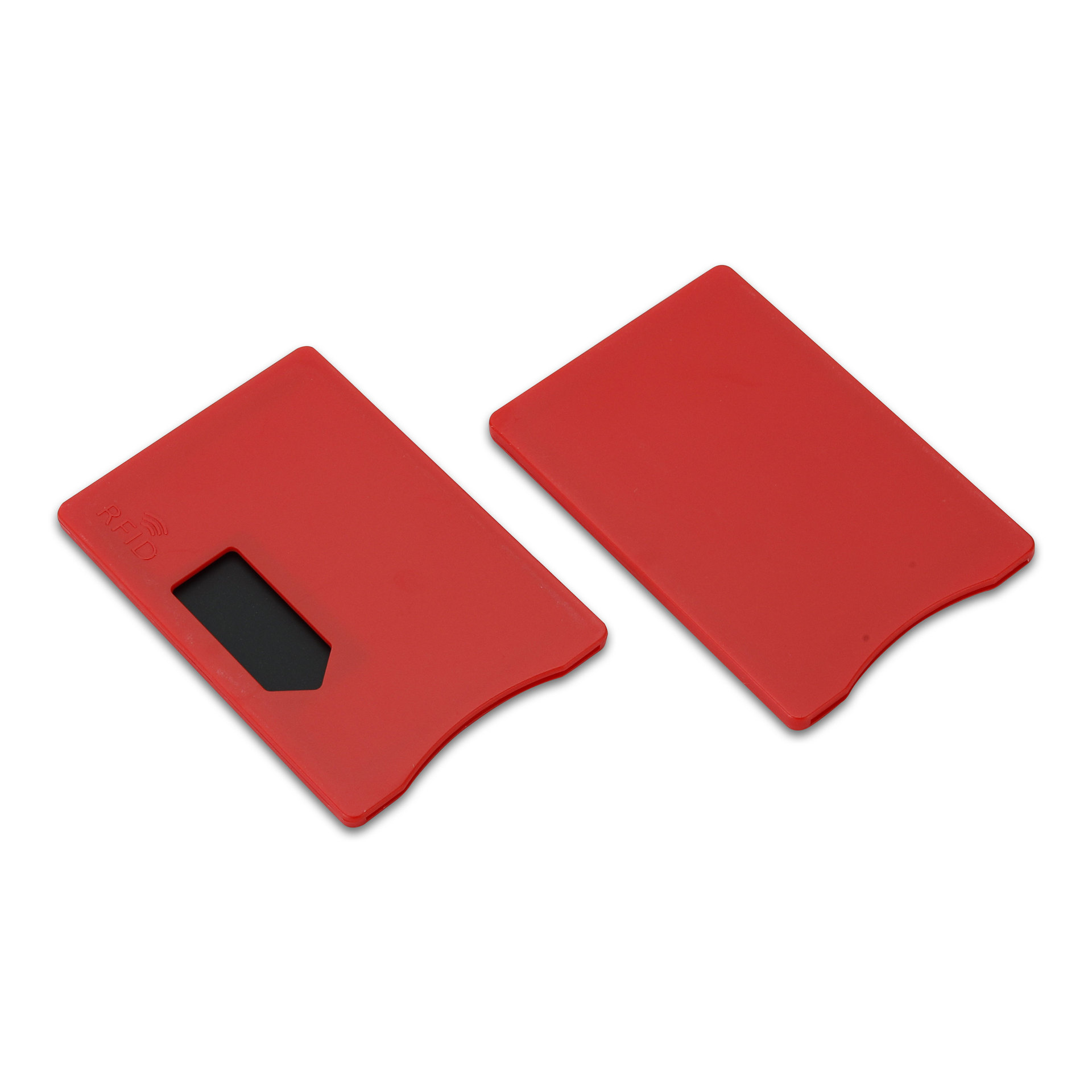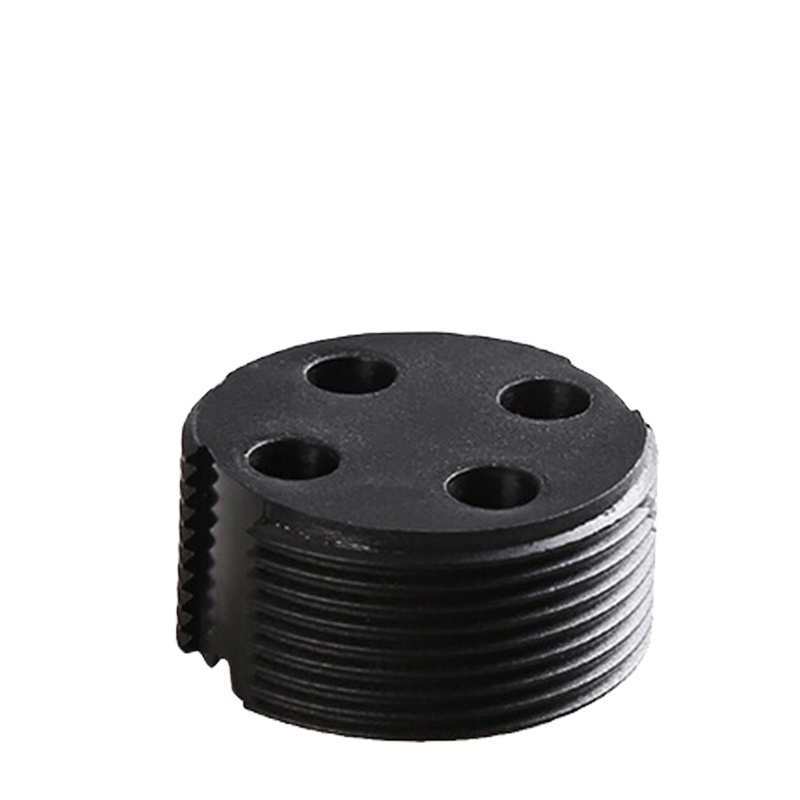
הבנת תגי RFID והיישומים שלהם
תוֹכֶן הָעִניָנִים
מבוא לטכנולוגיית RFID
במדריך זה, נפרט כיצד תגי RFID פועלים, את הסוגים השונים שלהם, וכיצד חברות משתמשות בהם כיום כדי להפחית טעויות, לקצץ בעלויות ולחסוך זמן.

מה הם תגי RFID
תג RFID פסיבי הוא מכשיר אלקטרוני קטן המשתמש בגלי רדיו לאחסון ולהעברת נתונים לקוראי RFID סמוכים. בניגוד לברקודים, תגי RFID אינם דורשים קו ראייה, מה שמאפשר מעקב ללא מגע ואוטומטי.
כל תגית כוללת בדרך כלל:
- שבב מיקרו לאחסון נתונים
- אנטנה להעברת האות
- מצע (חומר כמו נייר, פלסטיק או ABS) להחזקת הרכיבים יחד
תגיות אלה נמצאות בשימוש נרחב למעקב אחר מלאי, אבטחת נכסים ואוטומציה של מערכות זיהוי בתעשיות שונות.
כיצד פועלים תגי RFID
טכנולוגיית RFID פועלת באמצעות שלושה מרכיבים עיקריים:
- תג RFID – מכיל נתונים מאוחסנים כגון מזהה מוצר, מספר סידורי או חותמת זמן.
- קורא RFID – שולח גלי רדיו כדי לאתר תגים הנמצאים בטווח.
- תוכנה/מערכת אחורית – אוספת, מעבדת ומציגה את הנתונים מהקורא.
ישנן שתי קטגוריות תגיות עיקריות:
- תגי RFID פסיביים: מופעלים על ידי האנרגיה מהקורא. חסכוניים ונפוצים.
- תגי RFID פעילים: מופעלים באמצעות סוללה, מאפשרים טווחי קריאה ארוכים יותר ושידור רציף.
בהתאם לתדירות ולסוג התג, טווחי הקריאה יכולים לנוע בין כמה סנטימטרים ליותר מ-100 מטרים.

סוגי תגי RFID: מה ההבדל ביניהם?
להלן ההבדלים בין תגי RFID בהתאם למקור הכוח שלהם ולשימוש בהם:
| סוּג | מקור כוח | קרא טווח | דוגמאות לשימוש |
| פַּסִיבִי | מופעל על ידי הקוראים | עד 10 מטר | קמעונאות, לוגיסטיקה, בקרת גישה |
| פָּעִיל | סוללה מובנית | 30–100+ מטרים | מעקב אחר צי רכב, מערכות מיקום בזמן אמת |
| חצי-פסיבי | מופעל באמצעות סוללה (חיישנים) | 10–50 מטר | שרשרת קירור, ניטור סביבתי |
תגי RFID פסיביים הם הנפוצים ביותר בשל מחירם הזול, יכולת ההרחבה שלהם וצורתם הקומפקטית.
סוגי תגי RFID לפי תדר
מערכות RFID מסווגות בדרך כלל לפי תדר, המשפיע על טווח הקריאה והביצועים שלהן.
1. LF RFID (תדר נמוך – 125 kHz)
טווח קריאה: עד 10 ס"מ
מתאים ביותר ל: מעקב אחר בעלי חיים, בקרת גישה
תכונות: עמיד בפני הפרעות מים ומתכת
2. RFID בתדר גבוה (13.56 MHz)
טווח קריאה: עד 1 מטר
מתאים ביותר ל: מערכות ספריות, כרטיסים חכמים, מערכות תשלום
תואם לתגי NFC
3. UHF RFID (תדר גבוה במיוחד – 860–960 MHz)
טווח קריאה: עד 12 מטרים
מתאים ביותר ל: מעקב אחר מלאי, לוגיסטיקה, קמעונאות, שרשרת אספקה
נמצא בשימוש נרחב במערכות מעקב אחר מחסנים וכלי רכב.
אילו עסקים משתמשים בתגי RFID?
RFID התפתח לפתרון נפוץ בקרב עסקים קטנים וגדולים כאחד. בין המשתמשים הנפוצים ניתן למנות:
- קמעונאים (Zara, Decathlon): לצורך דיוק במלאי ומניעת גניבות.
- בתי חולים ומעבדות: מעקב אחר צמידי מטופלים, תרופות ומכשירים.
- לוגיסטיקה ו-3PL: תנועת נכסים בזמן אמת לאורך שרשראות האספקה.
- מכבסות ומלונות: ניהול מצעים ומדים.
- חברות בנייה: מעקב אחר כלים ובקרת גישה לעובדים.
- יערנות וחקלאות: ניהול עצים, מעקב אחר בעלי חיים.
- אולמות אירועים: כרטיסים עם טכנולוגיית RFID וניטור תנועת קהל.
תחומים אלה נהנים מתהליכים מהירים יותר, הפסדים נמוכים יותר ונראות טובה יותר.
RFID בלוגיסטיקה לעומת קמעונאות לעומת שירותי בריאות
הבה נשווה את תפקידו של ה-RFID במגזרים מרכזיים אלה:
| תכונה | לוֹגִיסטִיקָה | קִמעוֹנִי | שירותי בריאות |
| מטרה | מעקב בזמן אמת ואופטימיזציה של מסלולים | נראות מלאי ומניעת גניבות | מעקב אחר נכסים, בטיחות המטופלים |
| תגיות בשימוש | UHF פסיבי, תגיות אקטיביות | UHF פסיבי, NFC | HF פסיבי, NFC |
| Use Case | מעקב אחר מכולות, סריקת משטחים | ביקורת מדפים, אוטומציה של נקודות מכירה | מעקב אחר תרופות, זיהוי מטופלים |
| התמקדות בתשואה על ההשקעה | יעילות והפחתת טעויות | הפחתת הצטמקות והעלאת מכירות | חיסכון בזמן ובטיחות |
כל ענף מתאים את השימוש ב-RFID בהתאם לסוג הנכס, הסביבה ורמת האוטומציה הרצויה.
9 יישומים מעשיים של תגי RFID
תגי RFID כבר אינם רק קונספט עתידני — הם משמשים בתעשיות שונות ברחבי העולם כדי לשפר את היעילות, האחריות והעקיבות. להלן תשעה מהשימושים המשמעותיים והמעשיים ביותר של תגי RFID, בליווי דוגמאות מהעולם האמיתי לכל אחד מהם.
1. ניהול מלאי
במחסנים ובחנויות קמעונאיות, מערכות מלאי RFID מאפשרות לעסקים לבצע ניטור מלאי בזמן אמת בדיוק של מעל 99%. בניגוד לברקודים מסורתיים, תגי RFID אינם דורשים קו ראייה, מה שמאפשר לסרוק פריטים מרובים בו-זמנית.
שימוש במקרה: קמעונאית אופנה בינלאומית הטמיעה תגי RFID בכל בגדי הלבוש כדי להפוך את ביקורת המדפים לאוטומטית. מנהלי החנויות סורקים כעת מעבר שלם בתוך שניות, ומשפרים את דיוק המלאי ואת עיתוי החידוש.
הטבות:
- מלאי מהיר יותר
- צמצום מלאי
- נראות מלאי בזמן אמת
2. מניעת הפסדים בקמעונאות
התכווצות היא דאגה מרכזית בתחום הקמעונאות. אם תגי RFID המשולבים בתוויות המוצר (כגון תוויות תליה או מדבקות) אינם מנוטרלים כראוי בקופה, עלולים להופיע אזעקות ביציאה.
שימוש במקרה: קמעונאי אלקטרוניקה כמו Best Buy משתמשים בטכנולוגיית RFID במוצרים יקרי ערך כמו אוזניות, קונסולות משחקים וסמארטפונים כדי למנוע גניבות ולעקוב אחר תנועות המלאי.
הטבות:
- הרתעה מגניבה מחנויות
- עקיבות טובה יותר של המוצר
- שילוב חלק של תהליך התשלום
3. נראות שרשרת האספקה
תגי RFID משמשים יותר ויותר בתחום הלוגיסטיקה וההובלה לצורך מעקב מקצה לקצה אחר משלוחים. הם מאפשרים לעסקים לעקוב אחר סחורות בזמן אמת, מהיצרן ועד הלקוח.
שימוש במקרה: ספק לוגיסטיקה צד שלישי (3PL) סימן משטחים עם פסיבי תגי UHF RFID לניטור תנועות בין-מחסנים. העיכובים וההפסדים צומצמו ב-30%.
הטבות:
- עדכונים בזמן אמת על משלוחים
- דיוק משלוח מוגבר
- הוכחת שרשרת האחריות
4. ניהול כביסה
בתי מלון, בתי חולים ושירותי השכרת מדים נהנים מאוד מ תגי כביסה RFID. תוויות טקסטיל עמידות אלה עומדות בחום, מים ולחץ קיצוניים.
שימוש במקרה: קבוצת בתי חולים סימנה את כל המצעים והבגדים הניתוחיים כדי לעקוב אחר מחזורי הכביסה. המערכת הפחיתה את אובדן המצעים ב-20% והבטיחה עמידה בתקני ההיגיינה.
הטבות:
- אובדן מצעים מינימלי
- מעקב אחר ספירת מחזורים
- יעילות תפעולית משופרת
5. ניהול עצים וצמחים
סוכנויות איכות הסביבה, מתכנני ערים ומגזרי החקלאות משתמשים תגי RFID לזיהוי עצים ומעקב אחר צמחים. התגים מכילים נתונים על מינים, היסטוריית טיפול, גיל או לוחות זמנים לבדיקה.
שימוש במקרה: מועצת העיר סימנה את כל העצים ברחובות באמצעות RFID כדי לפקח על טיפולי הדברה ולוחות זמנים לגיזום. הדבר ייעל את תהליכי העבודה של הגננים והבטיח את בטיחות הציבור.
הטבות:
- ניטור מחזור חיים
- עמידה קלה יותר בתקנות
- מיפוי מיקום מדויק
6. מעקב אחר נכסי בריאות
בתי חולים משתמשים בטכנולוגיית מעקב נכסים באמצעות RFID כדי לנהל ציוד רפואי יקר ערך ולשפר את בטיחות המטופלים. צמידי RFID מסייעים גם לאמת את זהות המטופלים, לוחות הזמנים של מתן התרופות, ו שגרת הטיפול.
שימוש במקרה: מערכת בתי חולים מתויגת משאבות עירוי וכיסאות גלגלים. כתוצאה מכך, זמן ההשבתה של הציוד קוצר בחצי הודות לאיתור מהיר יותר של המיקום.
הטבות:
- אובדן נכסים מופחת
- זמינות ציוד מהירה יותר
- בטיחות משופרת למטופלים
7. ניטור שרשרת הקירור
בתעשיות התרופות והמזון, תגי RFID חצי-פסיביים עם חיישני טמפרטורה מנטרים מוצרים רגישים במהלך ההובלה.
שימוש במקרה: מפיץ חיסונים השתמש בטכנולוגיית RFID כדי להבטיח שהבקבוקונים יישמרו בטמפרטורה של 2°C–8°C במהלך המשלוח. אצוות שלא עמדו בדרישות סומנו לפני מתן החיסון.
הטבות:
- התראות טמפרטורה בזמן אמת
- עמידה בתקני בטיחות
- פחות החזרות מוצרים
8. מעקב אחר כלי עבודה וציוד בנייה
באתרי עבודה, תגי RFID על כלי מתכת מסייעים במעקב אחר השימוש בכלי, במניעת גניבות ובהקצאת אחריות. תגים עמידים העשויים ABS או אפוקסי עומדים בתנאי סביבה קשים בחוץ.
שימוש במקרה: חברת בנייה השתמשה בטכנולוגיית RFID כדי לבדוק את הכנסת/הוצאת הכלים מדי יום. הדבר שיפר את האחריות והפחית את מקרי אובדן הציוד ב-40%.
הטבות:
- בקרת מלאי באתרי עבודה
- מניעת אובדן
- ניתוח שימוש
9. גישה לרכבים וניהול צי רכב
תגי RFID מותקנים לעתים קרובות על שמשות רכב כדי לשלוט בגישה לחניונים, לקהילות מגודרות או לכבישי אגרה. הם מאפשרים זיהוי ללא מגע, ופועלים בדרך כלל במהירות של עד 60 קמ"ש.
שימוש במקרה: צי מסחרי השתמש בטכנולוגיית RFID כדי להפוך את רישומי הכניסה והיציאה מהשער לאוטומטיים, ובכך קיצר את זמן המעקב הידני ושיפר את האבטחה.
הטבות:
- גישה מהירה וללא מגע
- אבטחת אתר משופרת
- נתוני יומן מדויקים לניתוח צי רכב
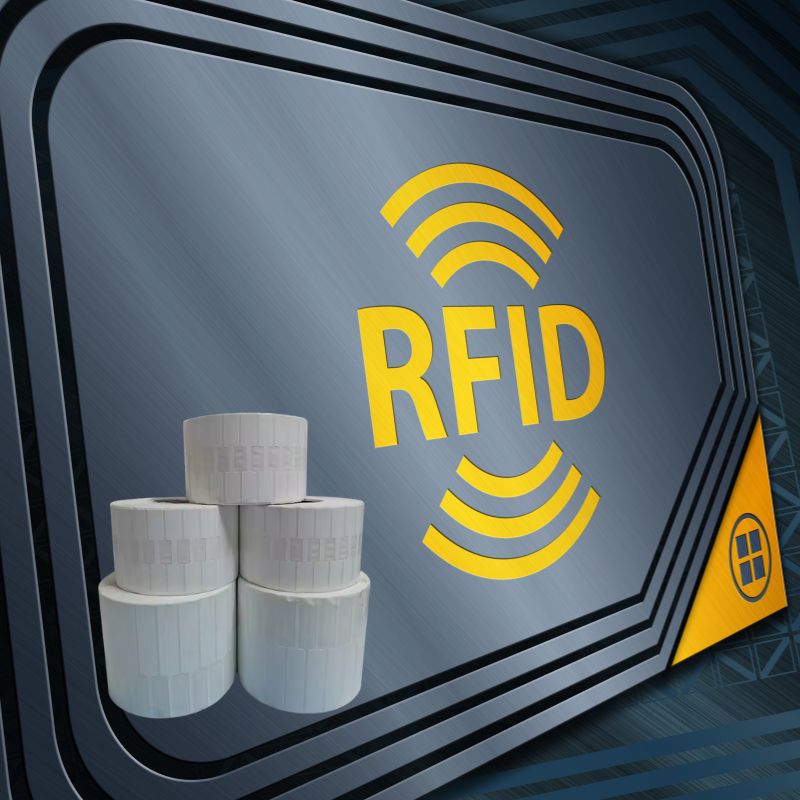
בחירת תג RFID מתאים: מדריך קצר לקונה
בחירת התג RFID הנכון היא קריטית להצלחת מערכת המעקב שלכם. שימוש בסוג הלא נכון עלול להוביל לביצועי אות חלשים, קריאות חסרות, תקלות סביבתיות או בזבוז תקציב.
להלן מדריך מפורט שיעזור לכם לבחור את תג ה-RFID המתאים ביותר לצרכים העסקיים, לתנאי הסביבה ולדרישות הטכניות שלכם.
1. מה אתה מתויג?
סוג, גודל וחומר הפריט שאתה מתויג יקבעו איזה סוג תג RFID אתה צריך.
- פריטי מתכת: דורשים תגי RFID על מתכת עם מבנה מיוחד למניעת החזרת אותות.
- טקסטיל או מדים: השתמש בתוויות בד רחיצות או בתוויות RFID לתפירה.
- פלסטיק או קרטון: תוויות RFID סטנדרטיות או תוויות מוטמעות מתאימות היטב.
- כלים או נכסים זעירים: בחרו בתגי RFID קשיחים קטנים להתאמה בטוחה.
התאם תמיד את גודל התווית ואת תאימות החומר למשטח הפריט שלך.
2. היכן ייעשה בו שימוש? (סביבה)
גורמים סביבתיים משפיעים רבות על עמידות התגים וביצועיהם.
| תנאי | סוג התג המומלץ |
|---|---|
| חשיפה חיצונית | תגי RFID קשיחים ועמידים בפני פגעי מזג האוויר |
| טמפרטורה גבוהה (>160°C) | תגי RFID עמידים בטמפרטורות גבוהות (למשל, מבוססי קרמיקה) |
| לחות, מים, כימיקלים | תגיות עמידות למים עם מעטפת אפוקסי או ABS |
| שחיקה תעשייתית | תגי RFID תעשייתיים מוקפים או מוברגים |
בסביבות עם הפרעות (למשל, מתכת או נוזלים), יש לבחור תמיד תגים המיועדים למשטחים אלה.
3. טווח קריאה נדרש
היישום שלך קובע מאיזה מרחק התג צריך להיות קריא:
- טווח קצר (<1 מטר): בקרת גישה, השאלת כלים, צמידי זיהוי לחולים
- טווח בינוני (1–5 מטר): מלאי קמעונאי, מעקב אחר נכסים
- טווח ארוך (5–30 מטר): מעקב אחר משטחים, גישה לרכבים, שערי מחסן
- טווח ארוך במיוחד (30 מטר ומעלה): לוגיסטיקה, ניהול צי רכב (שימוש בתגי RFID פעילים)
אל תשלמו יותר מדי עבור טווח ארוך אם טווח קצר מספיק. התאימו את הטווח למקרה השימוש.
4. שיטת הרכבה וחיבור
גם אופן החלת התג חשוב:
| סוג הקובץ המצורף | Use Case |
|---|---|
| מדבקה (סטיקר) | ספרים, קופסאות, מדפים |
| תפירה או איטום בחום | מצעים, מדים |
| הרכבה באמצעות ברגים או מסמרות | ציוד תעשייתי, כלי רכב |
| קשר/רצועה | כבלים, צינורות ושימושים חקלאיים |
| משובץ/משובץ | אריזה או שילוב מוצרים |
בחר תגית עם גורם צורה ואפשרות הרכבה נכונים למיטוב עמידות וקלות יישום.
5. צרכי זיכרון וקידוד
לא כל תגי RFID מאחסנים את אותה כמות נתונים. בחרו בהתאם למידע שאתם רוצים שהתג יכיל:
- EPC בלבד (96–128 סיביות): מזהה פריט, SKU – תקן למלאי
- זיכרון משתמש (512+ סיביות): נתונים מותאמים אישית כגון תאריך תפוגה, היסטוריית שירות
- איתור חבלה: מתריע כאשר התג נשבר או הוסר
- הגנה באמצעות סיסמה: עבור מערכות רגישות או מערכות בקרת גישה
השתמש בתגים תואמי EPC Gen2 כדי להבטיח תאימות גלובלית.
6. לשימוש חד-פעמי או לשימוש חוזר?
- שימוש חד-פעמי (מתכלה): אידיאלי עבור קמעונאות, משלוחים, לוגיסטיקה
- תגיות רב-פעמיות: השתמשו בתגיות אלה בתעשייה, בתחום הבריאות או במעקב אחר נכסים בעלי ערך גבוה כדי להפחית עלויות לטווח ארוך.
שקול את החזר ההשקעה שלך — לעתים תגיות רב-פעמיות חוסכות יותר לאורך זמן.
7. תאימות תדרים
ודא שהתג שלך פועל בתדר הנכון לאזור שלך ולמערכת הקריאה:
| תֶדֶר | בַּקָשָׁה |
|---|---|
| LF (125 קילוהרץ) | טווח קצר, מעקב אחר בעלי חיים ובקרת גישה |
| HF (13.56 מגה-הרץ) | כרטיסים חכמים, NFC וטיפול רפואי |
| UHF (860–960 MHz) | לוגיסטיקה, קמעונאות, מעקב תעשייתי |
השתמש בתגי RFID UHF ליישומים לטווח ארוך, ו-HF/NFC לסריקה מקומית וניידת.
8. שיקולים תקציביים
התמחור יכול לנוע בין $0.05 ל-$5+ לכל תג, בהתאם ל:
- כמות שהוזמנה
- סוג (תווית לעומת תווית קשיחה)
- תכונות (זיכרון, עמידות, הרכבה)
- התאמה אישית (הדפסה, קידוד)
אל תסתפק בבחירת האפשרות הזולה ביותר. התווית הנכונה מונעת אובדן, מגבירה את היעילות ומפחיתה את עלויות העבודה.
זקוק לעזרה בבחירת תג RFID מתאים?
אנו מתמחים בתגי RFID ותוויות מותאמים אישית לכל ענף. ממעקב אחר נכסים באמצעות UHF ועד תגי כביסה רחיצים, יש לנו את כל מה שהעסק שלך צריך.
הערות
מוצרים לוהטים

מהו ניהול פסולת באמצעות RFID
דמיינו עיר שבה כל פח אשפה מדבר — לא במובן המילולי — אלא באמצעות שבב זעיר שמודיע למערכת מתי הוא מלא, מתי הוא מרוקן ולאן הוא נלקח. זה מה שעושה כיום ניהול פסולת באמצעות RFID.

מהם אטמי בורג ומהן היישומים שלהם? | המדריך המלא
בסחר ולוגיסטיקה גלובליים, אטמי בורג ממלאים תפקיד מכריע בהבטחת אבטחת המטען ותאימותו. מכשירים קטנים אך עוצמתיים אלה נועדו לנעול מכולות משלוח, נגררים ודלתות מטען באמצעות מנגנון המונע חבלה.
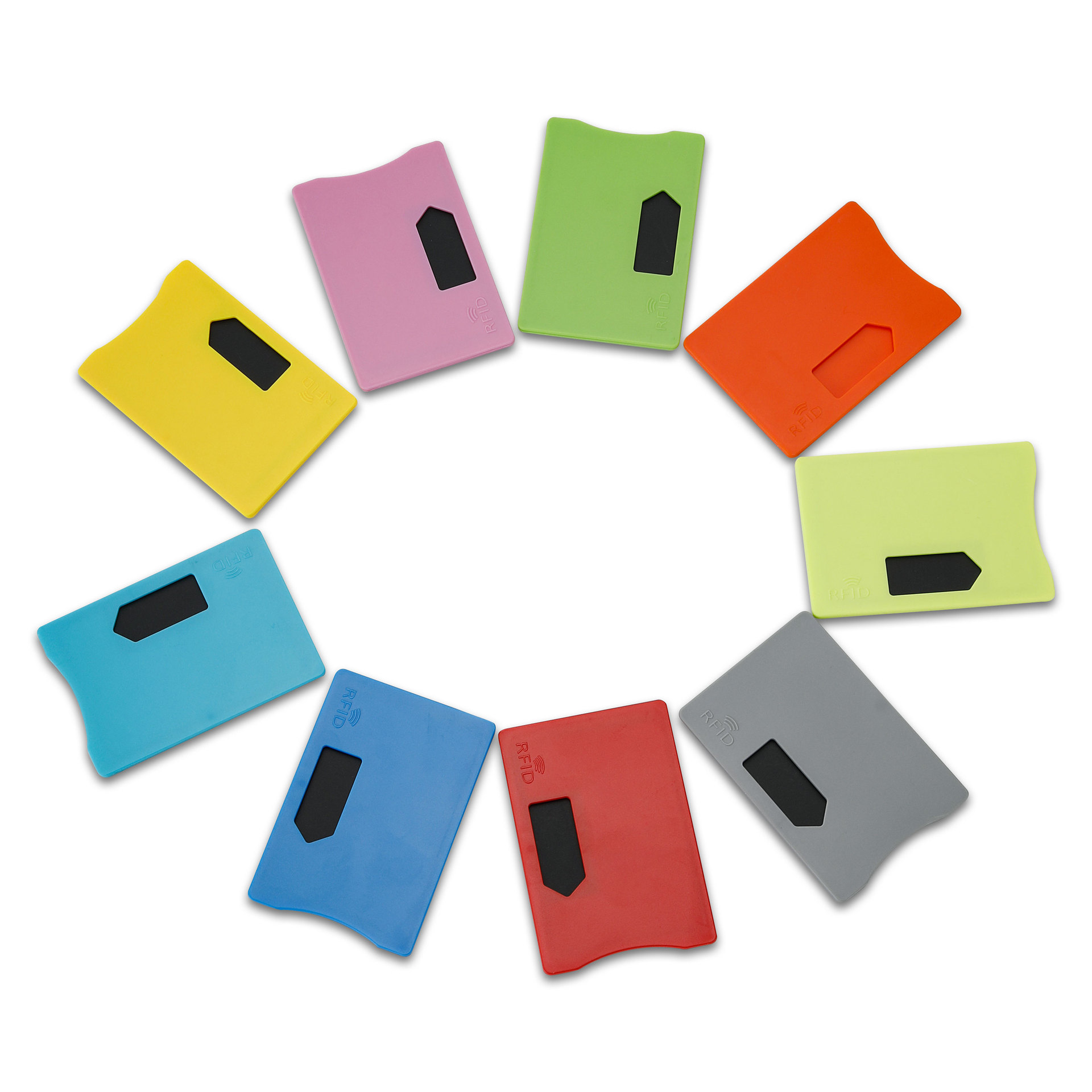
מהו מגן כרטיס RFID? יתרונות, דוגמאות לשימוש ומדריך לקנייה
טכנולוגיית RFID (זיהוי בתדר רדיו) נמצאת בכל מקום: בכרטיסי האשראי, בתגי זיהוי, בכרטיסי נסיעה, במפתחות לחדרי מלון ועוד. היא מציעה מהירות ונוחות, אך היא גם פותחת את הדלת לסוג חדש של גניבה דיגיטלית המכונה “סקים”. כאן נכנס לתמונה מגן כרטיסי RFID.
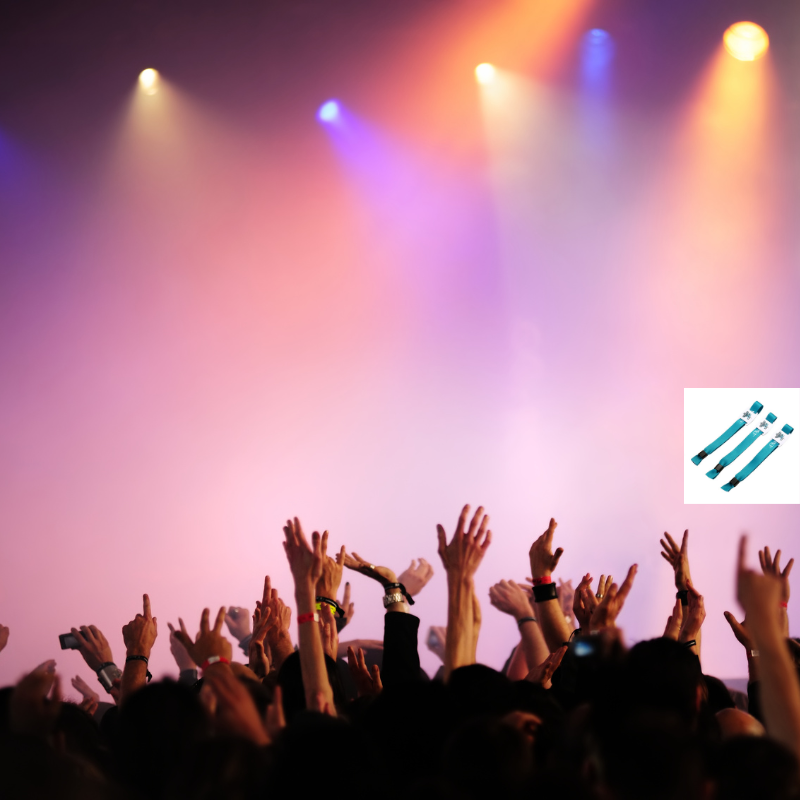
צמידי RFID לאירועים: מדריך לרכישה בכמויות גדולות למארגנים
צמידי RFID לאירועים הופכים לפתרון המועדף על מארגנים הזקוקים לכניסה מהירה יותר, למניעת הונאות ולתשלומים ללא מזומן בקונצרטים, בפסטיבלים ובאצטדיוני ספורט. בניגוד לכרטיסים מנייר או לקודי QR, צמידים חכמים אלה משתמשים בשבבים מוטמעים כדי לייעל את הגישה, לאבטח את העסקאות ולשפר את חוויית האורחים.
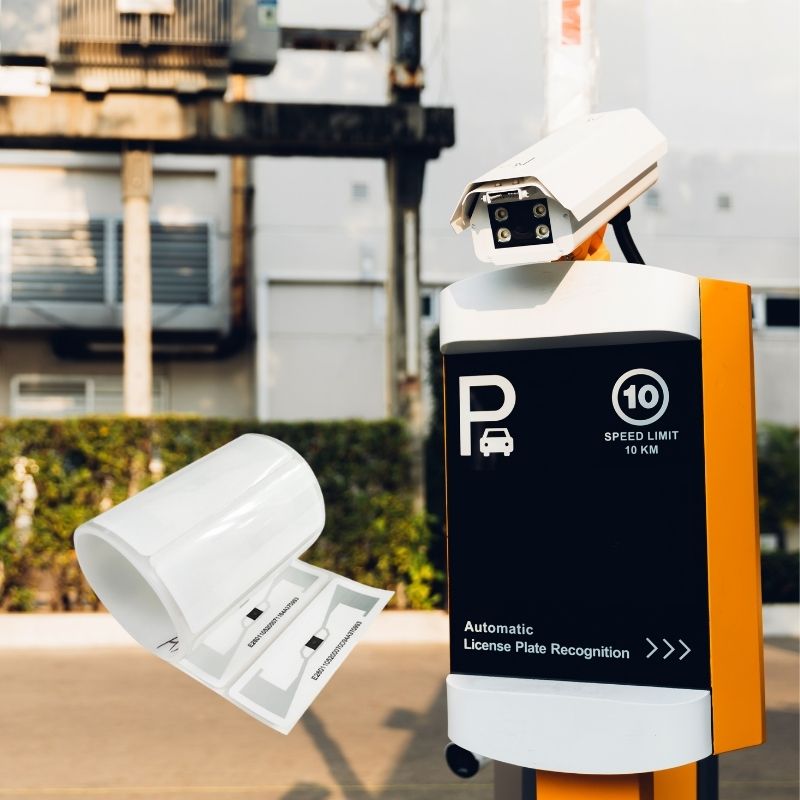
כיצד תג RFID על השמשה הקדמית משפר את בקרת הגישה לרכב ומערכות האגרה
בעולם המהיר של ימינו, זיהוי כלי רכב צריך להיות מהיר, מאובטח וללא מגע. תג RFID על השמשה הקדמית מספק בדיוק את זה — דרך אמינה לנהל גביית אגרה, חניה וגישה לשערים מבלי לעצור את כלי הרכב.
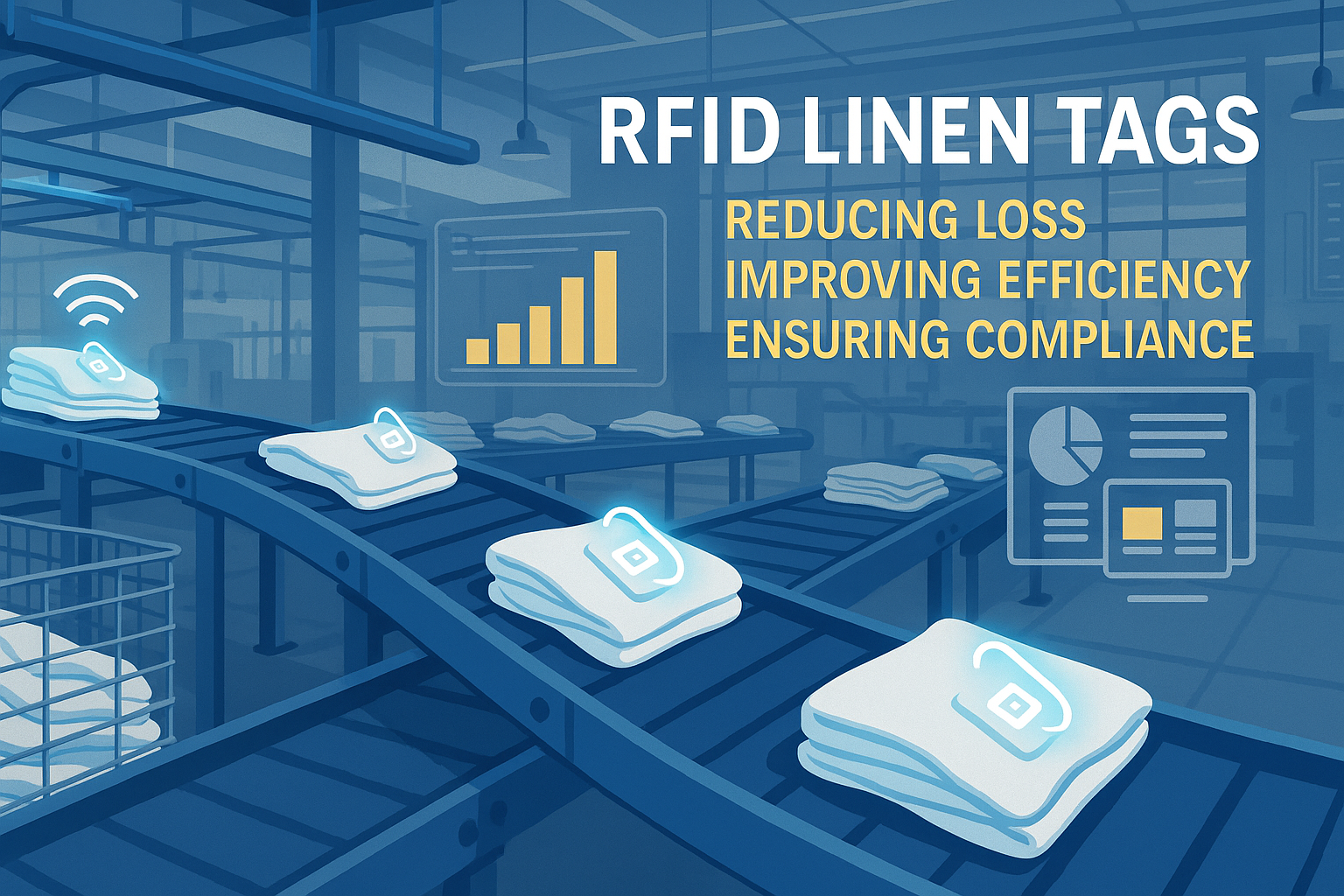
היתרונות של תגי RFID למצעים במכבסות מסחריות
ניהול כביסה בבתי חולים, בתי מלון או שירותי כביסה גדולים הוא משימה לא פשוטה. מדי יום, אלפי סדינים, מגבות ומדים מכובסים, ממוינים ונשלחים בחזרה. אך בעיות כמו אובדן מצעים, טעויות במיון וספירה ידנית עלולות לעלות לחברות הרבה כסף. לדוגמה, בתי מלון בינוניים עלולים להפסיד מעל $200,000 מדי שנה בגלל מצעים שאבדו.
זה המקום שבו תגי RFID לבדים נכנסים לתמונה.
תגים
בלוגים קשורים

מהו ניהול פסולת באמצעות RFID
דמיינו עיר שבה כל פח אשפה מדבר — לא במובן המילולי — אלא באמצעות שבב זעיר שמודיע למערכת מתי הוא מלא, מתי הוא מרוקן ולאן הוא נלקח. זה מה שעושה כיום ניהול פסולת באמצעות RFID.

מהם אטמי בורג ומהן היישומים שלהם? | המדריך המלא
בסחר ולוגיסטיקה גלובליים, אטמי בורג ממלאים תפקיד מכריע בהבטחת אבטחת המטען ותאימותו. מכשירים קטנים אך עוצמתיים אלה נועדו לנעול מכולות משלוח, נגררים ודלתות מטען באמצעות מנגנון המונע חבלה.

מהו מגן כרטיס RFID? יתרונות, דוגמאות לשימוש ומדריך לקנייה
טכנולוגיית RFID (זיהוי בתדר רדיו) נמצאת בכל מקום: בכרטיסי האשראי, בתגי זיהוי, בכרטיסי נסיעה, במפתחות לחדרי מלון ועוד. היא מציעה מהירות ונוחות, אך היא גם פותחת את הדלת לסוג חדש של גניבה דיגיטלית המכונה “סקים”. כאן נכנס לתמונה מגן כרטיסי RFID.

